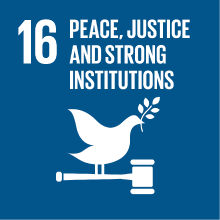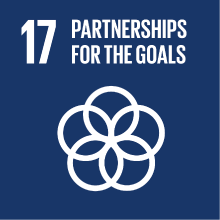CINEMA AND VISUAL CULTURES
- Academic year
- 2022/2023 Syllabus of previous years
- Official course title
- CINEMA E CULTURE VISUALI
- Course code
- FM0470 (AF:378679 AR:209706)
- Teaching language
- Italian
- Modality
- On campus classes
- ECTS credits
- 6
- Degree level
- Master's Degree Programme (DM270)
- Academic Discipline
- L-ART/06
- Period
- 1st Term
- Where
- VENEZIA
- Moodle
- Go to Moodle page
Contribution of the course to the overall degree programme goals
Expected learning outcomes
2. Ability to apply the acquired knowledge and comprehension: ability to write a critical essay or create a power point presentation using materials retrieved in the course textbooks or during lectures.
3. Judgment skills: ability to form personal interpretations based upon the knowledge of the course related critical-theoretical literature; a critical approach to the aesthetic, cultural and historical judgment of audio-visual artworks.
4. Communication skills: ability to participate in group discussions around the subjects of the course; ability to convey the specific nature of the theoretical and historical debate using an appropriate vocabulary, during the exam as well as during lectures; ability to interact with fellow students and with the lecturer in a critical and collaborative way, both in the classroom and through virtual electronic platforms.
5. Learning skills: ability to take notes and share them in a collaborative manner; ability to consult reference texts and the bibliography they contain in a critical manner.
Pre-requirements
Contents
Referral texts
- G. Pescatore, "L’ombra dell’autore. Teoria e storia dell’autore cinematografico", Carocci, Roma 2006.
- M. Dalla Gassa, "Orient (to) Express. Film di viaggio, etno-grafie, teoria d'autore", Mimesis, Milano-Udine 2016.
Students who will not be able to attend the course will have to read also one text between:
- L. Caminati, "Orientalismo eretico. Pier Paolo Pasolini e il cinema del terzo mondo", Bruno Mondadori, Roma 2007.
- E. Mazierska, L. Rascaroli, “Girando la nuova Europa. Viaggi postmoderni del road movie europeo”, Gremese Editore, Roma 2007
- D. Oregon, “Road Movies: From Muybridge and Méliès to Lynch and Kiarostami”, Palgrave Macmillan, London 2008
- S. Parigi, L. Mazzei (a cura di), “Viaggi italiani. Paesaggi e territori nella cultura visuale dal boom agli anni del riflusso”, Imago, n. 18, 2019.
- I. Perniola, "Chris Marker o del film-saggio", Lindau, Torino 2011.
- J. Ruoff, “Virtual Voyages: Cinema and Travel”, Duke University Press, Durham-London 2006.
Viewing at least eight among the following films is a compulsory part of the programme:
Ana-ta-han, Josef Von Sternberg, 1953.
Dimanche à Pékin, Chris Marker, 1955.
Lettre de Sibérie, Chris Marker, 1958.
India Matri Bhumi, Roberto Rossellini, 1959.
L’India vista da Rossellini, Roberto Rossellini, 1959.
Der Tiger von Eschnapur, Fritz Lang, 1959.
Das indische Grabmal, Fritz Lang, 1959.
L’immortelle, Alain Robbe-Grillet, 1963.
Le Mystère Koumiko, Chris Marker, 1965.
Loin du Vietnam, AA.VV,, 1967
La via del petrolio, Bernardo Bertolucci, 1967
Appunti per un film sull’India, Pier Paolo Pasolini, 1968.
Calcutta, Louis Malle, 1968.
L'inde fantôme, Louis Malle, 1969.
Le mura di Sana’a, Pier Paolo Pasolini, 1971.
Chung-Kuo Cina, Michelangelo Antonioni, 1972.
Il fiore delle Mille e una notte, Pier Paolo Pasolini, 1974.
India Song, Marguerite Duras, 1975
Comment Yukong déplaça les montagnes di Joris Ivens e Marceline Loridan, 1976
Sans Soleil, Chris Marker, 1983.
A.K., Chris Marker, 1985.
Tokyo-Ga, Wim Wenders, 1985.
Une histoire de vent, Joris Ivens, 1988.
Further indications of bibliographic and filmographic studies can be found among the documents uploaded on Moodle platform.
Assessment methods
Type of exam
Teaching methods
Further information
Ca’ Foscari follows the Italian law (Law 17/1999; Law 170/2010) for the support and accommodation services available to students with disabilities or specific learning disabilities. If you have either a motor, visual, hearing or another disability (Law 17/1999), or a specific learning disorder (Law 170/2010) and you require support (classroom assistance, technological aids for carrying out exams or personalized exams, accessible format material, note retrieval, specialist tutoring as study support, interpreters or other), please contact the Disability and DSA office disita@unive.it.
2030 Agenda for Sustainable Development Goals
This subject deals with topics related to the macro-area "International cooperation" and contributes to the achievement of one or more goals of U. N. Agenda for Sustainable Development


